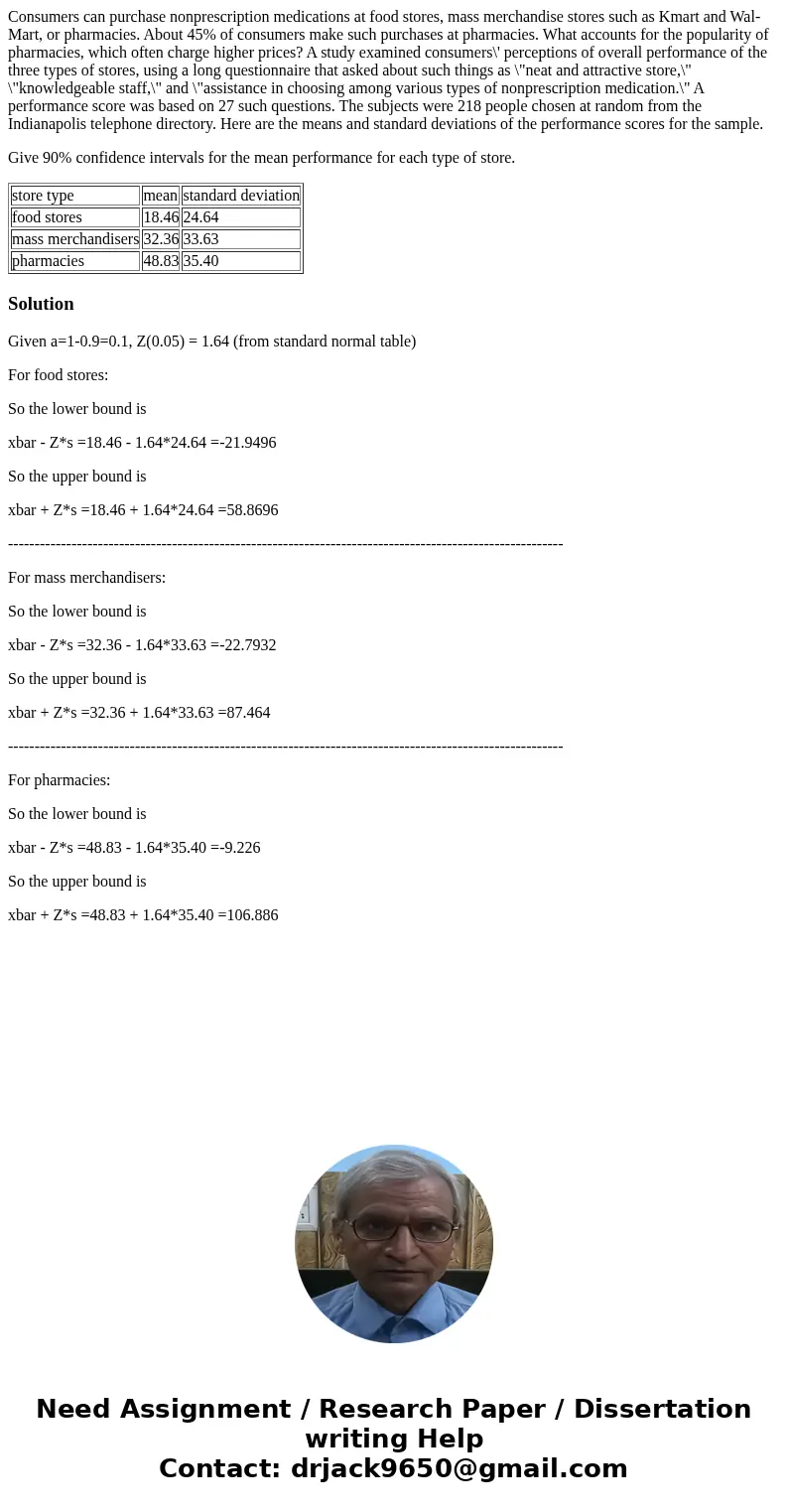Consumers can purchase nonprescription medications at food s
Consumers can purchase nonprescription medications at food stores, mass merchandise stores such as Kmart and Wal-Mart, or pharmacies. About 45% of consumers make such purchases at pharmacies. What accounts for the popularity of pharmacies, which often charge higher prices? A study examined consumers\' perceptions of overall performance of the three types of stores, using a long questionnaire that asked about such things as \"neat and attractive store,\" \"knowledgeable staff,\" and \"assistance in choosing among various types of nonprescription medication.\" A performance score was based on 27 such questions. The subjects were 218 people chosen at random from the Indianapolis telephone directory. Here are the means and standard deviations of the performance scores for the sample.
Give 90% confidence intervals for the mean performance for each type of store.
| store type | mean | standard deviation |
| food stores | 18.46 | 24.64 |
| mass merchandisers | 32.36 | 33.63 |
| pharmacies | 48.83 | 35.40 |
Solution
Given a=1-0.9=0.1, Z(0.05) = 1.64 (from standard normal table)
For food stores:
So the lower bound is
xbar - Z*s =18.46 - 1.64*24.64 =-21.9496
So the upper bound is
xbar + Z*s =18.46 + 1.64*24.64 =58.8696
---------------------------------------------------------------------------------------------------------
For mass merchandisers:
So the lower bound is
xbar - Z*s =32.36 - 1.64*33.63 =-22.7932
So the upper bound is
xbar + Z*s =32.36 + 1.64*33.63 =87.464
---------------------------------------------------------------------------------------------------------
For pharmacies:
So the lower bound is
xbar - Z*s =48.83 - 1.64*35.40 =-9.226
So the upper bound is
xbar + Z*s =48.83 + 1.64*35.40 =106.886

 Homework Sourse
Homework Sourse